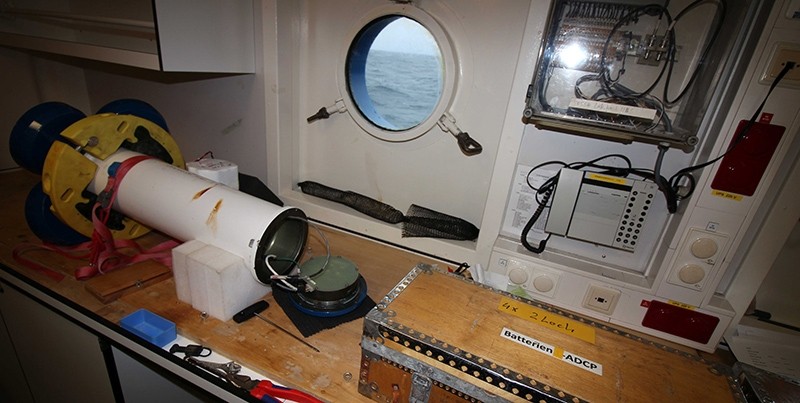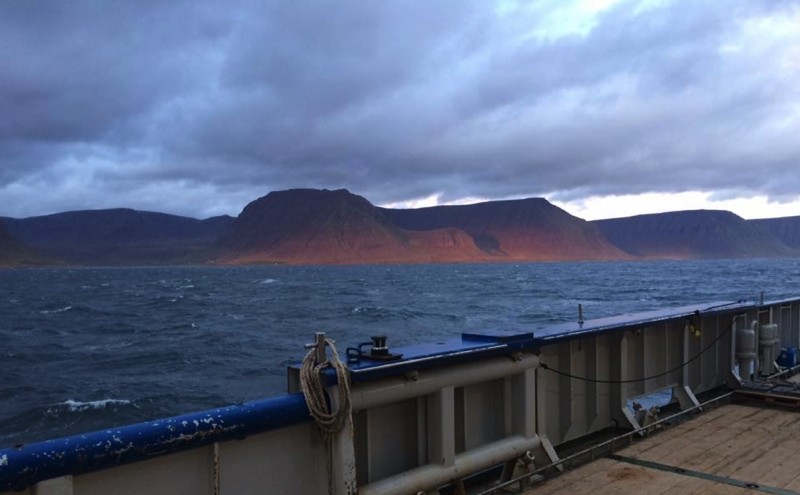Dr. Kerstin Jochumsen - Universität Hamburg


24 September - Final days on RV Pelagia
On Thursday afternoon RV Pelagia left Arnarfjödur and headed towards the working region. Conditions were still rough with strong winds and swell, so we could not sleep much that night. On Friday morning, we reached the area of our mooring deployments one week ago. The moorings were set up for only measuring a short period of time, but doing this with high frequency in order to capture turbulent processes. Thus for all five moorings the recovery was scheduled for Friday. We started directly after breakfast and were finished successfully in the afternoon at coffee time. All recovered instruments had worked properly, but four temperature recorders were lost due to severed ropes.
After finishing the mooring work, RV Pelagia set course towards Reykjavik, as another storm was predicted to pass Denmark Strait on Saturday and Sunday. Our cruise therefore had to end two days earlier than planned. However, we consider the cruise to be a success. Our focus was on the mooring work and we have completed all of our tasks in this regard with no problems. We had a great time on board and thank the captain and crew of RV Pelagia as well as the organizing team at NIOZ for their support.
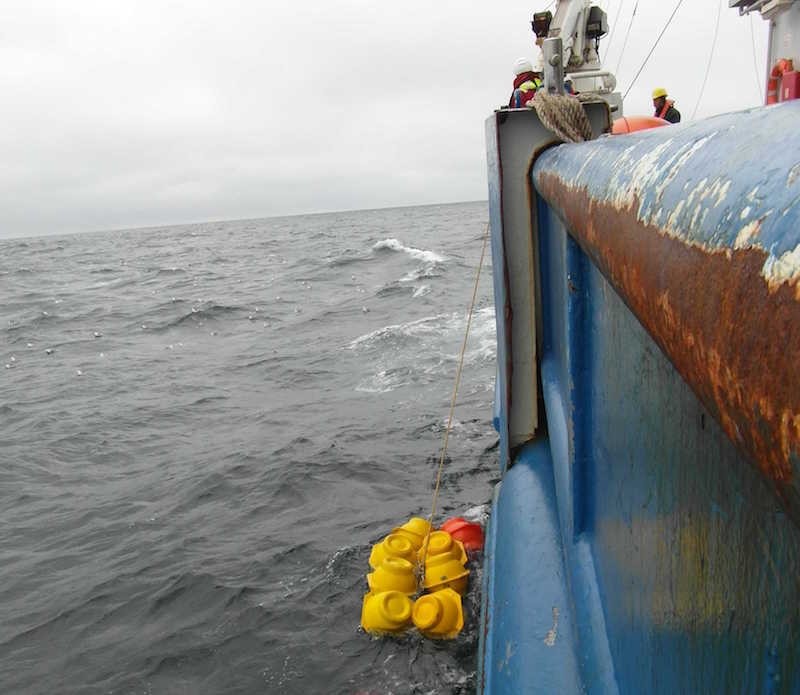
20 September - Waiting for the storm to kick in
We have now reached Arnarfjördur and wait for the storm to pass by. Here is our report about yesterday’s work.
Heading back from our stations on the Greenland shelf, the first mooring deployment position was reached on Tuesday morning. We placed moorings DS 2 at the same position where we recovered it a few days ago. Thus, our overflow time series can be continued to summer 2018, when we will pick it up again with R/V Merian. The array at the sill of Denmark Strait was extended by a current meter on the Icelandic side of the strait. Furthermore, three moorings were placed about 30 km downstream in order to capture spatial changes of the flow. Some instruments were deployed in trawl-resistant frames to protect them from fishery. Due to an upcoming storm in our working region, work was interrupted and R/V Pelagia took shelter in a fjord at the northern Icelandic coast. We will wait here until the conditions in our working region calm down enough to allow further station work.
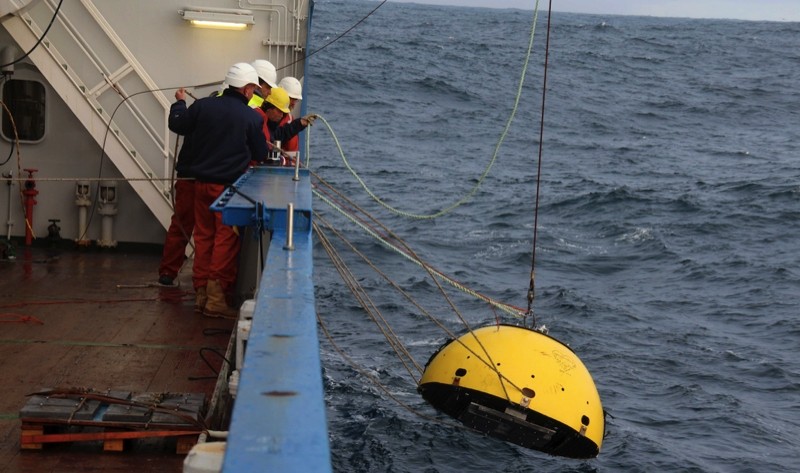
19 September - Grounded iceberg
All monday we were busy to conduct a section of temperature and salinity profiles from Iceland close to Greenland. No ice was spotted on the radar and surface water temperatures stayed above 4°C even close to the coast, so we were able to follow our planned route. However, our last station brought a spectacular view on a grounded iceberg. We completed this section several times before on other cruises. The combined data allow us to investigate the water distribution on the Greenland shelf. This year, the water column was colder when compared to last year, and less Atlantic influence is seen close to Greenland.
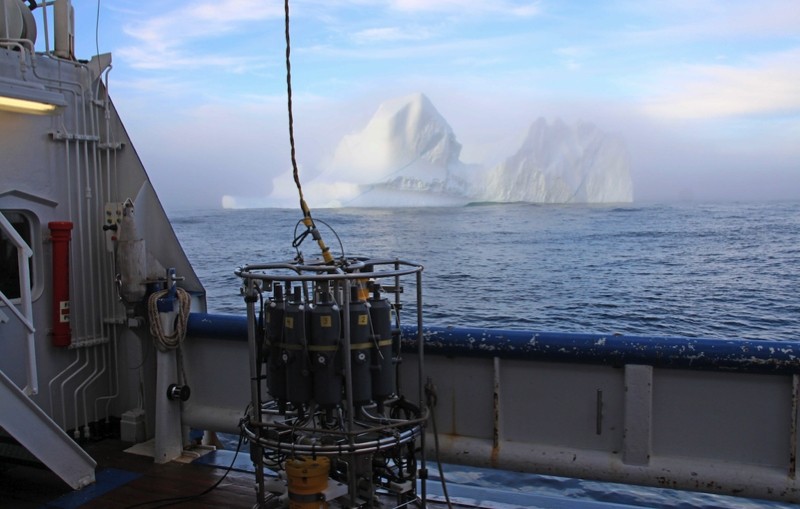
17 September - Recoverig mooring DS-2
Our attempts to recover moorings deployed last year with R/V Poseidon in Denmark Strait were not successful on Saturday, when fog and rain minimized our sight. We therefore resumed profiling the water column, until our mooring positions were reached again on Sunday at noon. The releases of the moorings answered our acoustic signals clearly and both moorings popped up closely to R/V Pelagia. The instruments were recovered quickly and seem to have functioned well throughout the year. New time series of temperature, salinity and current speed and direction will thus be available from our long term monitoring spot, where the strength of the overflow is measured since 1996.
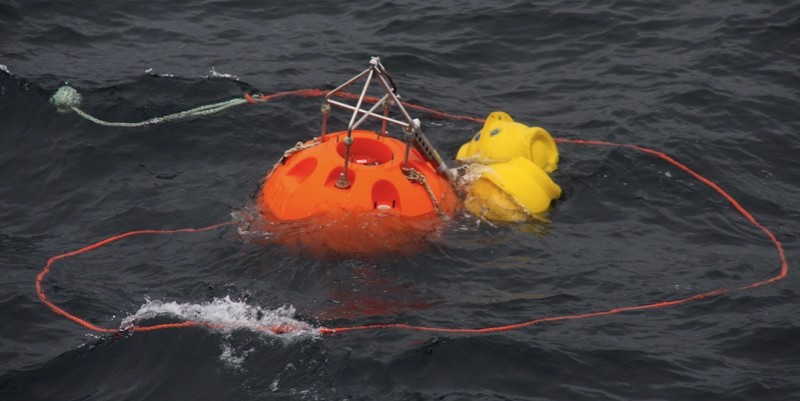
15 September
On Thursday evening R/V Pelagia reached the next station for water profiling. The work went smoothly during the night and we can now begin our analysis of the distribution of overflow water on the continental slope off Greenland. At 9 am on Friday morning we started our mooring program with the deployment of sensor chain. Altogether five moorings were deployed in close vicinity; the work was finished in the afternoon. Fortunately the weather was nice for working outside, rain and fog came up only later. The data from the moored instruments will be used to investigate turbulence occurring at the upper boundary of the dense water flow, which forms a bottom layer of about 150 m thickness in this region.
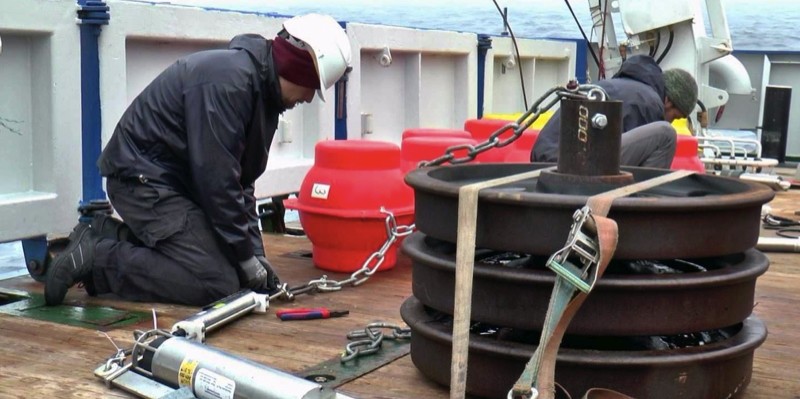
13 September - Mooring day
Preparation for mooring work continued during the whole Tuesday. All instruments were checked and started and lines, shackles and weights were prepared on deck. The first station of the survey was started on Tuesday evening. We lowered our measurement system into the water, hence getting profiles of temperature, salinity and currents. We stayed at one station the whole night, taking many profiles. This method is called yoyo-profiling. It allows us to estimate temporal variability of the dense water flow.
Unfortunately, one of our cruise participants injured her thumb on Wednesday morning, so at the moment we are going back to Reykjavik so we can bring her to medical services. Our station work will therefore be interrupted for two days, but it seems the weather looks good for the coming days so we will be able to continue our mooring work.
